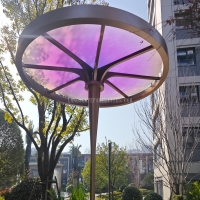Welcome to the website for landscape facilities products and knowledge.
How do landscape tables in botanical gardens support both education and relaxation?
Botanical gardens serve as sanctuaries where nature and human curiosity intersect. Among their many features, landscape tables stand out as unique tools that seamlessly combine education and relaxation. These thoughtfully designed installations provide visitors with an immersive way to engage with plant life while fostering a sense of tranquility.
From an educational perspective, landscape tables act as interactive classrooms. They often display labeled plant specimens, geological formations, or miniature ecosystems, allowing visitors to learn about biodiversity, conservation, and ecological relationships at their own pace. The tactile nature of these displays makes them particularly effective for children and visual learners, turning complex botanical concepts into accessible, hands-on experiences.
Simultaneously, these tables create spaces for relaxation and mindfulness. Their natural materials and organic shapes blend harmoniously with the garden environment, inviting visitors to pause and connect with nature. The act of observing intricate plant details or tracing the contours of a miniature landscape can be deeply calming, offering a respite from the fast-paced digital world.
Many botanical gardens strategically place these tables in shaded alcoves or near water features, enhancing their restorative qualities. Visitors often find themselves lingering longer at these spots, absorbing information while unwinding in the peaceful surroundings.
The dual purpose of landscape tables reflects the modern approach to public green spaces—where learning doesn't feel like work, and relaxation becomes enlightening. By engaging multiple senses and catering to different learning styles, these installations make botanical education more inclusive while providing much-needed opportunities for urban dwellers to decompress in nature's embrace.
As urban populations grow and screen time increases, such multifunctional garden elements will likely become even more valuable in bridging the gap between human wellbeing and environmental awareness.
Related search:

Recommendation
Metal frame with gradient color acrylic combined with high-end shading landscape facilities